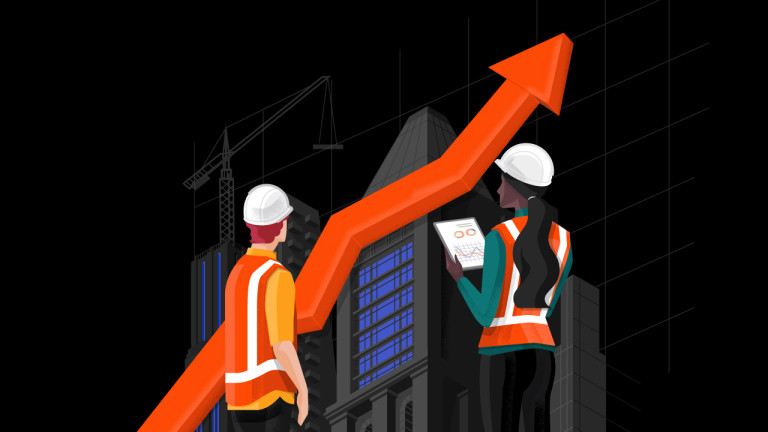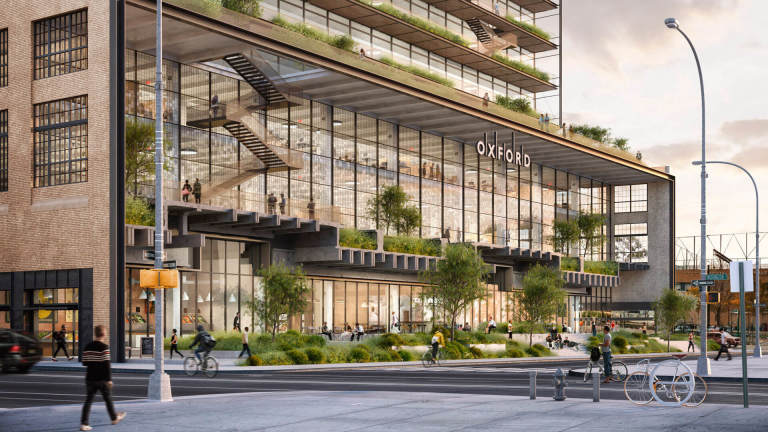Predicting future risks, and taking steps to mitigate their impact, is critical to the success of any project. While it is impossible to eliminate entirely, identifying common sources of risk is the first step in minimising loss. Below, we'll explore some of the most common construction risks that can disrupt project schedules, erode profit margins, and drive expensive, lengthy disputes.
Delays
Without a doubt, delays are among the most common risks involved in construction. Pushing back the delivery date on projects affects everyone on the job. Delays can stem from a variety of places, including:
Poor project management
Permitting & inspections
Supply chain disruptions
Change orders
Accidents
Adverse weather
Delays can be caused by activities at any level of the chain, and both in the back office and on the jobsite. As a result, it is critical for owner-developers and main contractors to establish clear communication processes that are easy to use by employees, subcontractors, and vendors alike. The sooner potential delays are identified and communicated to the construction manager, the faster they can take action to avoid or reduce the delay.
Documentation Errors
According to the Arcadis 2022 Construction Costs Report, the second-highest cause of disputes globally was errors and omissions in contract documents. The increasing size and complexity of commercial and public construction projects, combined with growing cost-saving pressure to speed up construction, creates more potential for errors and omissions in the preconstruction process. Errors in drawings, specifications, and design coordination can lead to increased capital costs and schedule delays.
The risk caused by documentation problems extends well beyond preconstruction. Main contractors must often meet stringent notice deadlines and submission requirements. Documentation errors or missed deadlines can delay payments and even invalidate a main contractor's right to file a claim.
The risk of errors is compounded by the sheer volume of documents required to complete a project, including:
Drawings
Submittals
Contract documents
Notices
Pay applications
Lien waivers
Variations
and many others
Change Management
Any material change to the contract after construction begins is a significant risk to owners-developers, contractors, and suppliers alike, because it will affect time, scope of work, materials, and cost.
When the Main Contractor receives an RFI from the owner-developer that directs them to make a material change to the project, it kicks off a waterfall of events down the chain. The Main Contractor will issue RFIs to each subcontractor whose work is impacted.
Ideally, each subcontractor would submit a change order that details the cost and schedule adjustment required, and wait for the owner-developer’s approval before they begin the work. But in the real world, in an effort to avoid or reduce schedule delays, contractors frequently get started on work before it is approved. In this all-too-common scenario, payment disputes between the owner-developers and main contractors are a near inevitability. Risk prevention around change management begins during preconstruction. The more time and effort spent on investigating site.
Conditions and reviewing drawings and site plans for accuracy, the fewer changes required after breaking ground. During the project, owner-developers and main contractors should follow a clear and efficient process for communicating and managing changes, doing everything possible to reduce the time between RFIs and change order approval.
Main contractors can greatly reduce their risk of payment disputes over contract changes by getting an approved change order in hand before beginning the work.
Supply Chain Issues
Building material shortages and price escalations can impact schedules, construction costs, and profit margins. The global supply chain has experienced near-continuous setbacks and disruptions in recent years, with wide-ranging impacts on construction in progress.
Pricing for lumber and other materials has been volatile. But many main contractors have had recent trouble even getting delivery of necessary materials. Supply chain issues aren't always caused by a global pandemic. Cost increases and material shortages can be driven by:
Shipping and trucking issues
Natural disasters
Business closures
Spikes in demand
Fuel prices
Economic recession
Strikes and labour disputes
Many construction contracts include an escalation clause to balance risk between the main contractor to the owner-developer in the event of price spikes. But construction managers and owner-developers need to keep a close eye on global supply chain developments to monitor the risk of material shortages. A flexible and diversified supply chain is fast becoming essential for construction projects of any size.
Poor Project Management
Poor project management leads to miscommunication, delays and disputes. When a main contractor or construction manager isn’t clear on what’s expected or does a poor job of scheduling subcontractors, time and materials can go to waste.
Poor project management can cause a ripple effect across other projects as well, increasing the risk for subcontractors. When sloppy project management delays a subcontractor's work, it can disrupt schedules on other jobs and make labour and equipment coordination an impossible task.
Labour Shortages & Poorly Scoped Work
Labour presents a construction risk with projects of any size. Finding qualified, reliable employees is a growing challenge for businesses in every industry. There’s always a risk that manpower lined up for a project might fall through.
When a main contractor takes on a project and discovers they don’t have the workforce to finish it, it can slow everyone on the job down. Again, this pushes out the timeline and cuts into profitability.
It’s hard to keep a project on track when it’s unclear what that track looks like. A poorly defined scope of work is a management issue that can (and usually does) roll downhill. Main contractors working under a fixed price or lump sum contract should pay close attention to items like:
Site conditions
Customer input
Materials pricing
These can drive the cost of a project up and profit margins down. However, there are mechanisms to use, like cost-plus contracts for avoiding the effects of a job without a definitive scope. Improving communication on every project level can lead to a better-defined scope and help you stay profitable by avoiding scope creep on your projects.
Health & Safety Hazards
The building industry consistently ranks at the top of the most dangerous industries. The risk of quality and safety hazards is a frequent concern for construction businesses, who want to both maintain a healthy workforce and avoid financial loss due to increased workers compensation insurance premiums or penalties from safety violations.
Payment Disputes
The time to get paid in construction is among the longest of all industries. Slow payments create risk for everyone on a project, at all levels of the chain. Payment problems disrupt contractor cash flow and increase the risk of default. They also increase an owner-developer's risk of lien claims on the property, as contractors and suppliers take action to recover unpaid contractual amounts.
Payment disputes arise frequently due to:
Funding/financing delays
Variations
Retainage
Lien waivers
Back charges
Work quality disputes
Comprehensive documentation, clear communication, and close adherence to contract requirements are vital for contractors to prove their case if it ends up in court.






